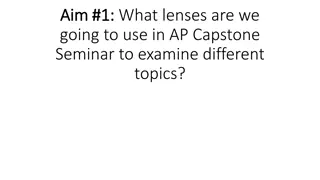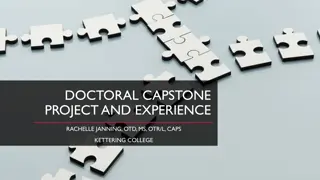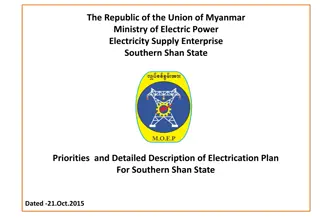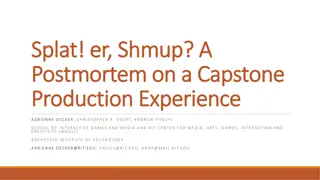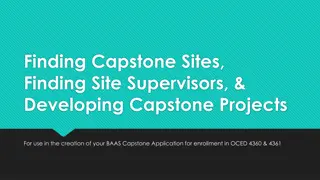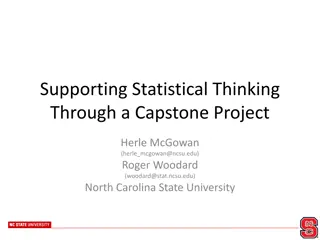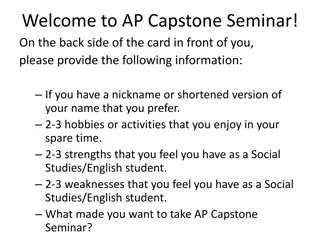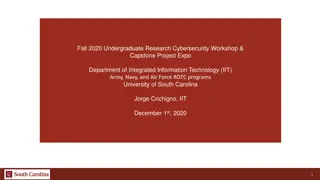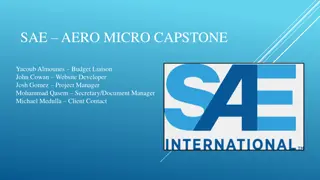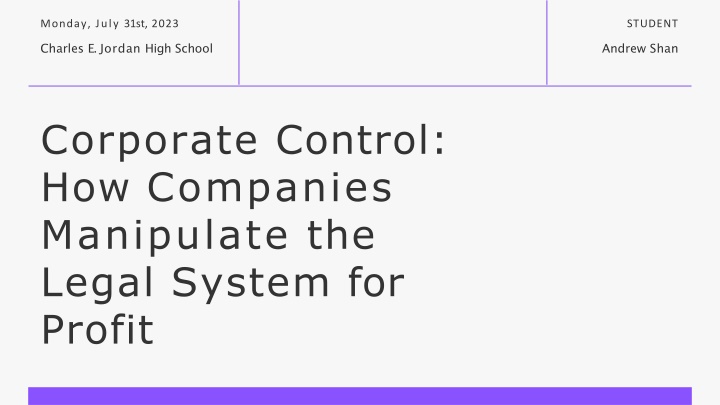
Corporate Manipulation of Legal Systems for Profit
Explore how multinational and Fortune 500 companies exploit legal loopholes, influence policies, and avoid taxes. Learn about strategies used to sidestep legal responsibilities and government regulations for financial gain.
Uploaded on | 1 Views
Download Presentation

Please find below an Image/Link to download the presentation.
The content on the website is provided AS IS for your information and personal use only. It may not be sold, licensed, or shared on other websites without obtaining consent from the author. If you encounter any issues during the download, it is possible that the publisher has removed the file from their server.
You are allowed to download the files provided on this website for personal or commercial use, subject to the condition that they are used lawfully. All files are the property of their respective owners.
The content on the website is provided AS IS for your information and personal use only. It may not be sold, licensed, or shared on other websites without obtaining consent from the author.
E N D
Presentation Transcript
Monday, July 31st, 2023 STUDENT Charles E. Jordan High School Andrew Shan Corporate Control: How Companies Manipulate the Legal System for Profit
Agenda Page Motivation I 3 Terminology & Research Question II 5 Thesis & Methodology III 7 Findings IV 9 Conclusion & Limitations V 12
I Motivation The Federal Tax rate for major corporations is 21% as established by the Tax Cuts and Jobs Act of 2017. 73 had an effective tax rate below 14.5%. 39 corporations received money from the government instead of paying taxes. Gardner, M., Wamhoff, S. (2021). 55 corporations paid $0 in federal taxes on 2020 profits. Institute on Taxation and Economic Policy 3
I Motivation In 2019 pharmaceutical companies were able to block a bill that would lower drug prices (Stein & Abutaleb, 2019). Expert estimations theorize that about 20 to 30 trillion dollars are hidden offshore in tax avoidance schemes (Dillon, 2017). A ruling by the Supreme Court in AT&T Mobility LLC v. Concepcion declared that requiring corporations do not need to allow class-action lawsuits (131 S.Ct. 1740, 2011). 4
II Terminology & Research Question Lobbying - The action of influencing members in the legislative or executive branch Tax Avoidance - The legal method which many corporations use to reduce the amount of taxes used. PAC (Political Action Committee) - An organization that can take contributions from a variety of sources and can use those donations to support a candidate. 5
II Terminology & Research Question What strategies do multinational and Fortune 500 companies utilize to dodge legal responsibilities and ignore government restrictions? 6
III Thesis & Methodology Multinational and Fortune 500 corporations often use their vast resources, such as their overwhelming capital or access to legal power, to influence governmental policies, utilize tax breaks, and abuse legal loopholes. Ducasse, P. (2016). Tax havens: the billions that get away. Canadian Union of Public Employees 7
III Thesis & Methodology Peer Reviewed Sources Specific Case Studies Legal Definitions 18 Sources JStor, Google Scholar, Duke Library Online Catalogue Taxi drivers protesting Uber in Poland Key Terms: Lobbying, multinational corporation, PACs, tax-avoidance, and corporate stalling. 8
IV Findings Tax Planning Corporations rarely pay their full taxes. Many methods are When lawmakers allow corporations to avoid taxes, the costs to the United States are enormous. Because the statutory income tax rate for corporations is 21 percent, the total tax breaks a corporation receives is simply 21 percent of its profits minus what it paid. employed toreduce a company's tax burden. Gardner, M., Wamhoff, S. (2021). 55 corporations paid $0 in federal taxes on 2020 profits. Institute on Taxation and Economic Policy 9
IV Findings Loopholes The strategies described in this article, with the possible exception of reinventing classifications, have been used by other corporations long before the emergence of the digital economy. They have been part of the toolbox of lawyers and lobbyists and an element of business power. Stalling strategies, however, are especially significant in the digital economy. Corporations oftendo not follow laws. Thespeed at which governmentscreate regulations cannot match corporations. Mazur, J., Serafin, M. (2022). Stalling the state: how digital platforms contribute to and profit from delays in the enforcement and adoption of regulations. International Political Science Review 56(1) 103-130 10
IV Findings Influencing Policy There are many ways corporations support policy makers, both legal and not. Corporate influence can drasticallymorph new We find a strong connection between corporate PAC contributions and lobbying suggesting that many firms use multiple channels of potential political influence to influence regulatory and policy outcomes. policy. Hill, M. D., Kelly, G. W., Lockhart, G. B., Van Ness, R. A. (2013) Determinants and effects of corporate lobbying. 42(4) 931-957 11
VConclusion & Limitations Limitations This research does not cover specific methods employed by the corporations. The only thing covered is broad methods, with some examples for certain methods. 12
VConclusion & Limitations Implications Future Research If nothing is done to succesfully restrain these corporations, their accumulation of power will make it nigh impossible to stop them. Future research should try to cover cases where corporations were able to be held accountable, and to see exactly why they were unable to dodge responsibility. 13
Acknowledgements Cohort 2 Teachers and Intern Duke University Hank and Billye Suber Aaron Young Scholars Summer Research Program Institue Samuel DeBois Cook Center for Social Equity
Monday, July 31st, 2023 STUDENT Charles E. Jordan High School Andrew Shan Thank you for listening! andrew.shan@outlook.com



